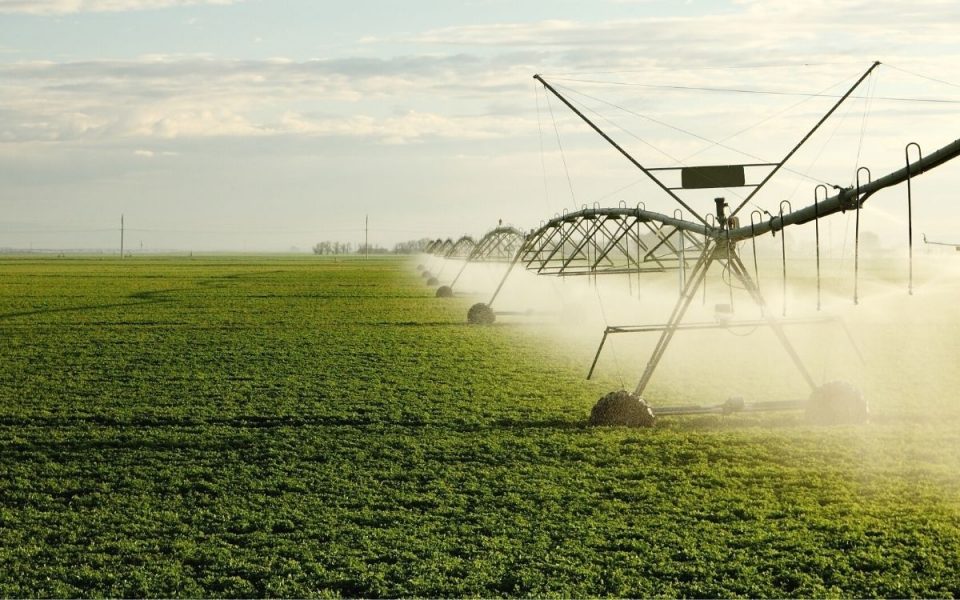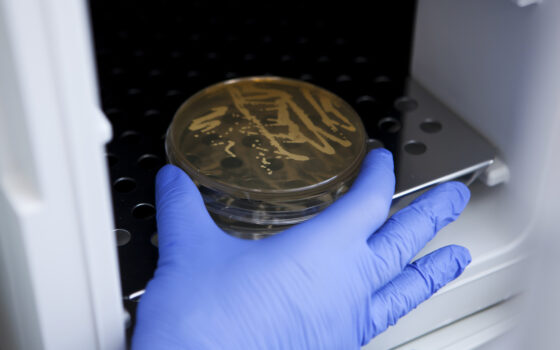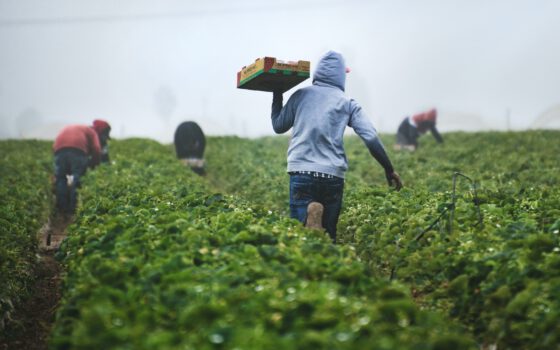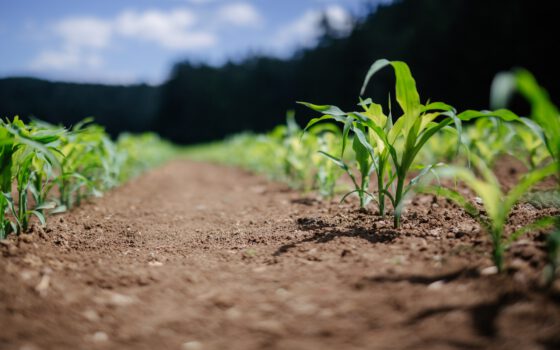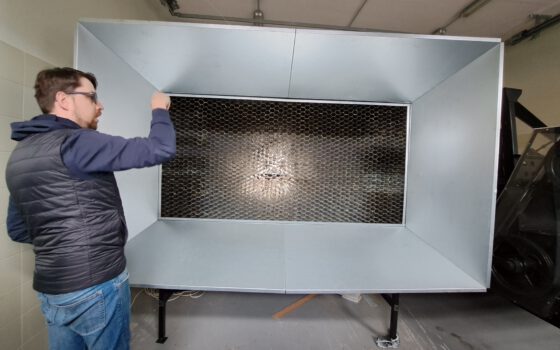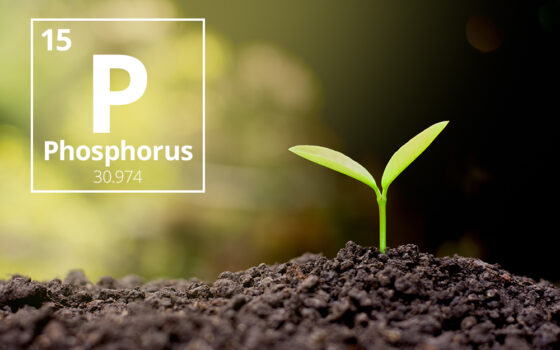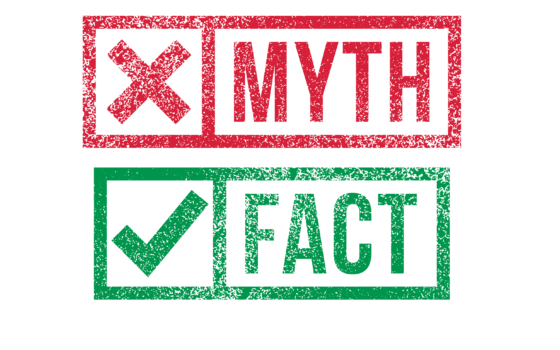The agricultural productivity in Europe has been growing steadily for 30 years. The average yield per hectare of cereals has doubled during this time and Europe has become a world leader in this segment of agricultural production. However, it is felt that a peak has been reached and it becomes impossible to get an even higher marginal yield. The main reason for the latter is the declining natural potential of the soil and the erosion of it. The average level of soil loss in the European Union’s erosion-sensitive lands (agriculture, forests and semi-natural areas) is 2.46 t ha-1 y., resulting in a total soil loss of 970 Mt per year. This problem has been escalating for many years and is now at the heart of a new European policy.
As a result of the Green Deal, Member States will have to reduce their use of mineral fertilizers and plant protection products. However, recent studies and research show that only a reduction in the usage of agrochemicals without a change in other farming technologies would reduce overall productivity. Even a relatively small (up to 20%) reduction in agricultural production in Europe would disrupt established food chains, reduce food availability and increase food prices by up to 80%. At the moment, we are seeing a significant increase in the prices of mineral fertilizers and farmers’ intentions to reduce fertilizer rates. Whether the theory of a significant increase in food prices described in scientific studies will be confirmed – we shall see in practice in 2022.
Regulatory pressures and market price anomalies only add to other long-standing tensions over the availability and efficient use of agricultural agrochemistry:
- Phosphorus resources are depleting rapidly and it cannot be produced industrially, making phosphorus prices highly volatile and increasingly high. These price fluctuations and the overall increase in prices will only become more pronounced towards the peak of phosphorus resource availability, after which the annual extraction will start to decrease. This limit should be reached within the next 40 years. It should be noted that the efficiency of embedded phosphorus is already low, plants absorb only up to 20% of it and the remaining amount in the soil is locked in forms inaccessible to the plant and is eventually leached into groundwater.
- Potassium availability is directly linked to geopolitical tensions, as more than 70% of the world’s potassium resources are stored in countries that do not have a politically secure supply.
- The dependence of traditional agrotechnologies on the high content of embedded synthetic nitrogen disrupts the natural nitrogen cycle in the soil, inhibits microorganisms that fix nitrogen from the atmosphere, and reduces the efficiency of nitrogen fertilizers. As with phosphorus fertilizers, there is a significant loss due to leaching and evaporation. The direct link with energy resources (especially gas) poses additional threats to the availability and price of nitrogen fertilizers.
The solution developed by UAB Nando, the product called BioSpektrum WG, is focused on handling the challenges posed by this issue. Degraded soils do not contain enough beneficial microorganisms, and they must be introduced into the soil in a targeted and the most efficient way possible, thus increasing macro and micro-nutrient use efficiency.
Developed product: a microorganism complex that accelerates all major plant nutrition processes and provides essential nutrients
- Bacillus megaterium (P) is a bacterium that releases phosphorus from insoluble forms. Phosphate solubilizing bacteria secrete acid phosphatases and phytases, which are helpful to convert an insoluble form of phosphate into a soluble form that can be possibly taken up by the roots
- Bacillus mucilaginosus (K) is a bacterium that releases potassium from mineral forms.
- Bacillus mycoides (Si) is a bacterium that dissolves and releases silica from silicate minerals. It is particularly little known in Europe and is not used in industrial agriculture, although it could fundamentally change the paradigm of supplying plants with silica. There is a growing consensus that, in addition to the major macronutrients (NPKs), silica is particularly important for the plant, especially to avoid biotic and abiotic stress, but its use on the plant (usually through foliar fertilization) is particularly expensive and inefficient.
- Mycorrhizal fungus is an endophytic microorganism that forms symbiotic relationships with the plant, expands the plant’s root system, and improves soil structure.
One of the research methods to determine the interaction between microorganisms introduced into the soil by industrial application and the efficiency in the use of mineral fertilizers is detailed soil studies comparing control (conventional technology) and technological soils (technology with the microorganism product). Three years of research have shown that even with higher yields and theoretically higher amounts of nutrients removed from the soil, available nutrient resources in the soil remain higher.
For example, a study conducted at the Institute of Horticulture in 2021, a branch of the Lithuanian Center for Agrarian and Forestry Research, found that BioSpektum WG not only increased the yield of sweet pepper by 6.1%, bus also did not reduce the potential of this soil. At the end of vegetation, the soil treated with BioSpektrum WG before planting, contained 1.8% more nitrogen, 15.8% more potassium and significantly less chloride compared to the control (642 mg l– 1 – – in control, 532 mg l-1 – in technology).
Soil agrochemical characteristics after the vegetation of sweet peppers, Babtai, Lithuania, 2021
| Parameters | Nutrient content after vegetation, mg l-1 | |
| Control soil | Soil treated with Biospectrum WG | |
| Nitrogen (N) | 109.2 | 111.2 |
| Ammonia | 109 | 111 |
| Nitrate | 0.2 | 0.2 |
| Phosphorus (P) | 4 | 4 |
| Potassium (K) | 38 | 44 |
| Calcium (Ca) | 37 | 34 |
| Magnesium (Mg) | 14 | 12 |
| Chlorides | 642 | 532 |
Another long-term study with BioSpektrum WG is being performed by Justinas Anušauskas, a doctoral student at the Academy of Agriculture of VMU, the main agricultural research institution in Lithuania. The main goal of his research is to determine in detail the potential of each of the microorganisms in BioSpektrum WG to release phosphorus. In parallel a field research to determine the effect of microorganisms by significantly reducing normal usage rates of mineral fertilizers is being conducted. In an experiment with spring barley in 2020, he chose to combine fertilization with NPK fertilizers with single-use ammonium nitrate fertilization – the total net nitrogen rate was 83.8 kg / ha. In the same technology, a 10% yield increase was achieved using BioSpektrum WG, but the increase in straw mass was recorded only within the margin of error. In this way, the complex effect of microorganisms on the final crop additive was confirmed, even without increasing the amount of green mass (and later straw).
In order to determine whether the reduction of fertilizers can be compensated for in the same season, a study with winter wheat was conducted at the Lithuanian Agricultural and Forestry Science Center in 2018. Although the season was very unfavorable and the scientific institution found that extreme weather conditions were detrimental to the efficiency of the products, it was found that a 10% reduction in nitrogen fertilizers did not adversely affect the yield supplement and paid off economically.
Fertilization technologies:
| Before sowing | Springfertilization | Springfertilization | Total nitrogen content, vm | |
| 1. Control | NPK 4-16-34 300 kg / ha | Ammoniumnitrate 260 kg / ha | Sulfan NS 26-14200 kg / ha | 154kg / ha |
| 2. BioSpektrum | NPK 4 -16-34300 kg / ha | Ammoniumnitrate 260 kg / ha | Sulfan NS 26-14200 kg / ha | 154/ ha |
| 2. BioSpectrum and10 percent lower nitrogen rate | NPK 4-16-34300 kg / ha | Ammoniumnitrate 260 kg / ha | Sulfan NS26-14140 kg / ha | 138 kg / ha |
Productivity of winter wheat Ada, fertilization with innovative biostimulation products
Akademija, Lithuania, 2018.
| Productivestems,number ofpcs. m-2 | Number of grains in stems inunits | YieldPcs. | Mass of 1000 grains, g | |
| 1. Control | 627 | 39.5 | 6.618 | 37.92 |
| 2. BioSpektrum WG | 620 | 39.8 | 6.635 | 37.41 |
| 2. BioSpektrum WG with 10 percent lower nitrogen rate | 626 | 38.7 | 6,610 | 37.86 |
Long-term observations and studies suggest that farmers, who are intending to reduce fertilization in 2022 due to particularly high mineral fertilizer prices, should use micro-organisms in parallel, ensuring better nutrient availability to plants not only in the same, but also in the following season as well.
